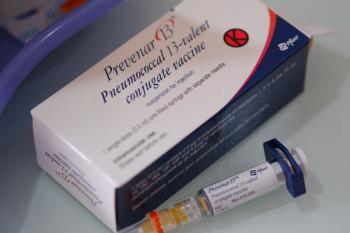
Dupilumab Therapy Improves Outcomes in Chronic Rhinosinusitis With Asthma
Dupilumab therapy led to improved outcomes in patients with coexisting upper and lower airway disease regardless of baseline asthma characteristics, according to research published in the Journal of Asthma and Allergy.1
Researchers sought to evaluate dupilumab efficacy in patients with chronic rhinosinusitis with nasal polyps and various asthma characteristics, as the current efficacy is unknown. Investigators conducted a post hoc analysis of the SINUS studies (SINUS-24 [NCT02912468] and SINUS-52 [NCT02898454]); data were included for patients with severe chronic rhinosinusitis with nasal polyps and asthma who received at 300 mg dupilumab or placebo every 2 weeks.
After reviewing baseline measures, investigators stratified patients into 5 groups representing relevant asthma characteristics: blood eosinophil levels ≥150 cells/µL; blood eosinophil levels ≥300 cells/µL (evidence of type 2 inflammation); 5-item Asthma Control Questionnaire (ACQ-5) score <1.5 (controlled asthma; ACQ-5 score ≥1.5 (uncontrolled asthma); and forced expiratory volume in 1 second (FEV1) <80% predicted (reduced lung function).
Researchers evaluated nasal polyp score, loss of smell score, the 22-item Sino-Nasal Outcome Test (SNOT-22) total, and domain scores for ear, facial, emotion, function, nasal, and sleep, as well as the University of Pennsylvania Smell Identification Test score and pre-bronchodilator predicted FEV1.
Among patients in the pooled intention-to-treat population (n=724), 59.1% had self-reported coexisting asthma. Within this group (n=428), 50.9% had uncontrolled asthma and 40.7% had predicted FEV1 <80%. Baseline characteristics of each condition were well-balanced across all asthma characteristic groups, with the exclusion of SNOT-22 scores, which were higher in the uncontrolled vs controlled asthma subgroup.
Investigators found that dupilumab therapy significantly improved the nasal polyp score, nasal congestion score, loss of smell score, and health-related quality of life at 24 weeks, compared with placebo. Also at week 24, investigators noted that the improvements in SNOT-22 score in dupilumab patients exceeded the minimum clinically important difference of 8.9 points (76.1% of patients with baseline eosinophils ≥150 µ/L; 77.3% of patients with baseline eosinophils ≥300 µ/L; 78.7% of patients with controlled asthma; 77.4% of patients with uncontrolled asthma; and 72% of patients with reduced lung function). Significant improvements in each SNOT-22 domain were also noted vs placebo.
FEV1 also improved across all asthma characteristics groups among those treated with dupilumab at weeks 24 and 52, with all changes reaching significance. ACQ-5 was significantly improved at week 24 with dupilumab, and these improvements were maintained at week 52.
“The results of this analysis demonstrate that dupilumab significantly improved both [chronic rhinosinusitis with nasal polyps] and asthma outcomes vs placebo, with improvements seen irrespective of relevant baseline asthma characteristics,” the researchers noted. Patients with type 2 asthma—typically a more severe and difficult to treat disease—also demonstrated improvement.
“Dupilumab significantly improved upper and lower airway outcomes in [this patient population], in line with other studies of biologics in the treatment of coexisting disease,” the researchers concluded. “These data add to our understanding of the effects of dupilumab in patients with coexisting upper and lower airway disease.”
Reference
1. Busse WW, Davord ID, Siddiqui S, et al. Dupilumab improves outcomes in patients with chronic rhinosinusitis with nasal polyps and coexisting asthma irrespective of baseline asthma characteristics. J Asthma Allergy. 2023;16:411-419. doi:10.2147/JAA.S391796
Newsletter
Pharmacy practice is always changing. Stay ahead of the curve with the Drug Topics newsletter and get the latest drug information, industry trends, and patient care tips.




